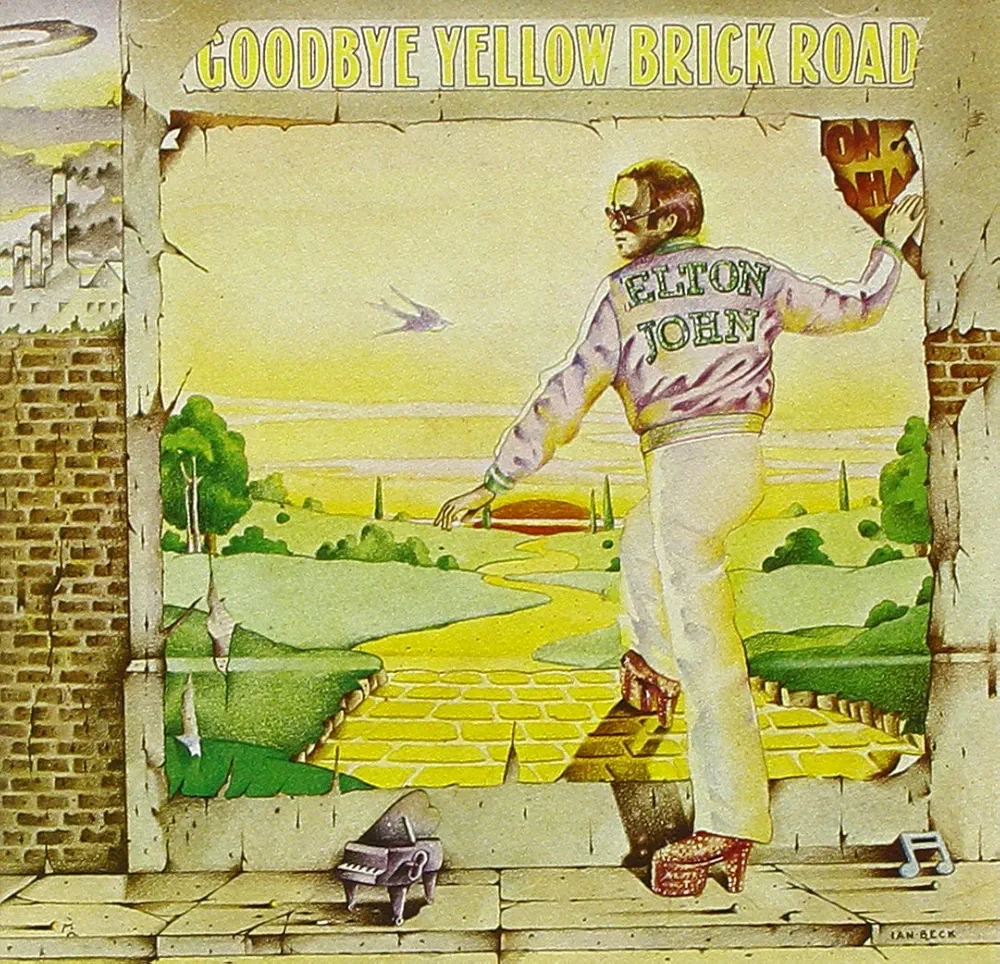Elton John’s “Goodbye Yellow Brick Road” stands as a monumental piece in the landscape of popular music. Released in 1973 as the title track of his album, it showcases a blend of poignant lyrics, rich melodies, and a distinctive arrangement that has captivated listeners for decades. The song reflects a yearning for authenticity and a departure from the trappings of fame, themes that resonate deeply in both the personal and collective human experience.
The Song’s Essence
At its core, “Goodbye Yellow Brick Road” is a narrative of disillusionment. The lyrics, penned by longtime collaborator Bernie Taupin, tell the story of someone who has reached a point of realization about the superficiality of success. The yellow brick road, a reference to the path of fame and fortune, symbolizes the allure of a glamorous lifestyle that ultimately leads to emptiness. The protagonist expresses a desire to return to simpler, more genuine roots, a sentiment that many can relate to in an increasingly complex world.
The song opens with a gentle piano melody, setting a reflective tone that invites the listener to engage with its themes. As the arrangement builds, layers of instrumentation create a rich tapestry of sound. The orchestration features strings and brass, which enhance the emotional weight of the lyrics. This combination of lyrical depth and musical sophistication is a hallmark of Elton John’s work, making “Goodbye Yellow Brick Road” a standout track in his extensive catalog.
Musical Influences and Similar Tracks
The song’s style is emblematic of the early 1970s, a period marked by a fusion of rock, pop, and elements of classical music. Artists like David Bowie and Paul Simon were also exploring similar themes during this era, often delving into the complexities of fame and identity. Bowie’s “Changes” and Simon’s “The Sound of Silence” both reflect a sense of introspection and societal critique, paralleling the contemplative nature of “Goodbye Yellow Brick Road.”
Another track that resonates with the themes of disillusionment is Fleetwood Mac’s “Landslide.” Released in 1975, it captures the essence of personal growth and the passage of time, echoing the desire for authenticity found in Elton John’s work. The gentle acoustic arrangement of “Landslide” complements its reflective lyrics, creating a sense of vulnerability that invites listeners to connect with their own experiences.
The Cultural Impact
“Goodbye Yellow Brick Road” has transcended its initial release, becoming a cultural touchstone that continues to resonate with new generations. Its themes of self-discovery and the quest for meaning are timeless, allowing the song to maintain relevance in contemporary discussions about mental health and the pressures of modern life. The track has been covered by numerous artists, each bringing their own interpretation while honoring the original’s emotional depth.
The song’s influence can also be seen in the work of contemporary artists who grapple with similar themes. For instance, Hozier’s “Take Me to Church” explores the complexities of identity and societal expectations, echoing the introspective qualities of Elton John’s classic. Similarly, Billie Eilish’s “Everything I Wanted” delves into the challenges of fame and the search for personal truth, aligning with the narrative of “Goodbye Yellow Brick Road.”
A Lasting Legacy
Elton John’s ability to blend personal narrative with universal themes has solidified “Goodbye Yellow Brick Road” as a timeless classic. Its exploration of the dichotomy between public persona and private self continues to resonate in an era where social media amplifies the pressures of image and success. The song serves as a reminder that the pursuit of authenticity is a journey worth undertaking, regardless of external accolades.
The album itself, also titled “Goodbye Yellow Brick Road,” showcases a diverse range of musical styles, from the upbeat “Candle in the Wind” to the rock-infused “Saturday Night’s Alright for Fighting.” This eclecticism reflects the artistic freedom of the 1970s and highlights Elton John’s versatility as a musician. The album has been lauded for its cohesive yet varied sound, further cementing its place in music history.
Conclusion
“Goodbye Yellow Brick Road” remains a powerful anthem of self-reflection and the quest for authenticity. Its rich musicality, combined with poignant lyrics, creates a lasting impact that continues to inspire both listeners and artists alike. As we navigate the complexities of modern life, the song serves as a reminder of the importance of staying true to oneself amidst the noise of external expectations.
In a world where the allure of the “yellow brick road” can be tempting, Elton John’s classic encourages us to seek our own paths, embracing the beauty of simplicity and the value of genuine connections. The legacy of “Goodbye Yellow Brick Road” is not just in its sound, but in its ability to resonate with the human experience, making it a timeless piece of art that will endure for generations to come.

 Elton John's "Goodbye Yellow Brick Road" captures the essence of leaving behind the familiar for the unknown. Its poignant lyrics and unforgettable melody resonate with anyone who's ever yearned for change. Let the music take you on a journey of self-discovery and reflection. What does it mean to you?
Elton John's "Goodbye Yellow Brick Road" captures the essence of leaving behind the familiar for the unknown. Its poignant lyrics and unforgettable melody resonate with anyone who's ever yearned for change. Let the music take you on a journey of self-discovery and reflection. What does it mean to you?